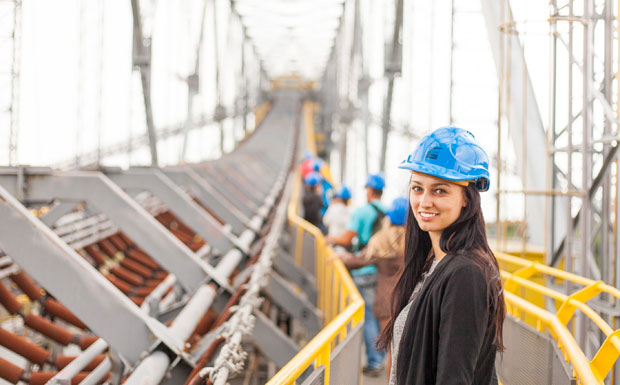An Insight to Gender Diversity In The Construction Sector

An Insight to Gender Diversity In The Construction Sector
Believe it or not, one in five construction firms in Britain have no women in senior positions. With some industry professionals believing that ‘there is a definite prejudice against women’ in the construction industry, there appears to still be an inequality of opportunity for women.
Gender equality is a big topic across all sectors at the moment and Construction News revealed that 50% of construction firms haven’t had a female manager. What is even more striking is that, when asking the women who did work within the industry, 48% claimed they had experienced gender discrimination in the workplace, with the most common example of this (28%) being inappropriate comments or behaviour from male colleagues. These are figures that prove that the industry still needs to enforce more regulations to change attitudes towards women in the industry and encourage equality.
As well as this, the gender pay gap continues to be a topic of conversation. Nearly half of construction companies (42%) do not monitor equal pay between gender in the business and 68% were not aware of any initiatives to support women transitioning into senior roles. Furthermore, according to Randstad, 79% of men believe they earn the same as their female colleagues in the same position. However, 41% of women disagree — highlighting the need for better pay transparency within the industry to dispel perceptions that men are earning more.
- The Future
According to research, 99% of onsite workers are men. Another figure that highlights the lack of gender diversity within the industry. Despite the figures, 93% of construction workers believe having a female boss would not affect their jobs, or would in fact have a positive effect by improving the working environment.
However, by 2020, women are expected to make up 25% of the construction sectors workforce in Britain. If the industry intends on closing the skills gap, women could potentially hold the key. With the industry raising concerns that it is experiencing a shortage of skilled workers, 82% of people working in construction agree that there is a serious skills shortage. If demand is expected to require an additional million extra workers by 2020, women could account for a significant portion of that — especially in senior roles, which have previously been bias towards their male colleagues.
It can’t be denied that there has been progress made among recent years. Back in 2005, there were just 6% of women in senior roles within the UK’s construction industry. However, fast forward to 2015, and this number had risen to 16% and is expected to continue to rise as we approach 2020.
As well as this, progression seems to be present in regard to promotions for women too. Back in 2005, an unfortunate 79% of women in the industry were dissatisfied with the progression of their careers. However, fast forward again to 2015, and this number more than halved to just 29%, with some of this progression likely to be attributed to the fact that almost half of women in the industry (49%) believe their employer to be very supportive of women in construction.
Although this seems to be a positive change for the industry, there is a lot of work still to be done. Ranstad also reports that there remains a tendency within the industry to exclude women from male conversations or social events, with 46% of females experiencing being sidelined. A further 28% said they had been offered a less important role and 25% reported being passed over for promotion.
The construction sector still appears to be a nice place for women to work despite the incidences of discrimination. 76% of women said they would still recommend a job in construction to a female friend, daughter or niece — and with a 60% increase in the average annual salary for women in the industry in the past decade from £24,500 in 2005 to £39,200 in 2015, there is no denying that progress is being made to combat gender inequality. But we still have a long way to go. Hopefully, by 2020, we can report further progress in the industry, making roles more attractive to females, and improving the gender diversity which could consequently prove to be a solution to the lack of skilled workers for the industry right now.
This article was brought to you by Nifty Lift — access platforms specialists.
Sources:
- https://www.randstad.co.uk/women-in-work/women-in-the-uk-construction-industry-in-2016.pdf
- http://rg-group.co.uk/whitepaper-women-and-the-construction-industry/
- https://www.constructionnews.co.uk/analysis/cn-briefing/women-in-construction-what-do-the-numbers-say/10029022.article
- https://www.constructionnews.co.uk/best-practice/skills/trad-ceo-there-is-a-definite-prejudice-against-women/10028845.article?blocktitle=Women-in-construction&contentID=20127
- https://www.constructionnews.co.uk/analysis/editors-comment/tackling-gender-diversity-is-an-education-for-us-all/10028849.article?blocktitle=Expert-opinion&contentID=7125
Guest Article. Contains a sponsored link.





